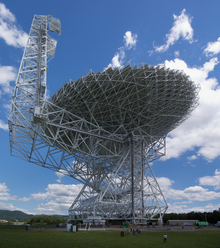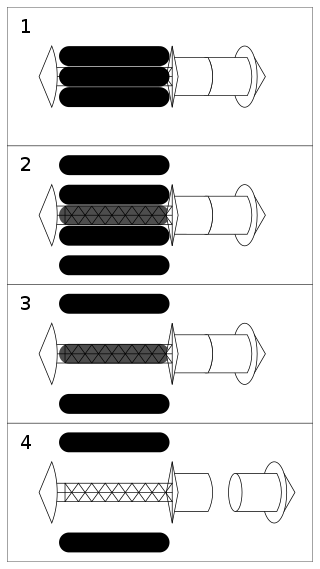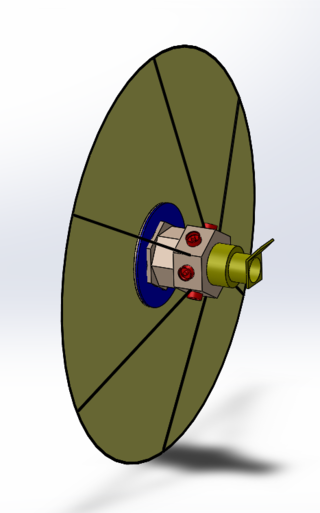Projects
Breakthrough Listen

Breakthrough Listen is a program to search for intelligent extraterrestrial communications in the Universe. [8] [10] [12] With $100 million in funding and thousands of hours of dedicated telescope time on state-of-the-art facilities, it is the most comprehensive search for alien communications to date. [10] [12] The project began in January 2016, and is expected to continue for 10 years. [13]
The project uses radio wave observations from the Green Bank Observatory and the Parkes Observatory, and visible light observations from the Automated Planet Finder. [14] Targets for the project include one million nearby stars and the centers of 100 galaxies. All data generated from the project are available to the public, and SETI@Home is used for some of the data analysis. The first results were published in April 2017, with further updates expected every 6 months.
Breakthrough Message
The Breakthrough Message program is to study the ethics of sending messages into deep space. [12] It also launched an open competition with a US$1 million prize pool, to design a digital message that could be transmitted from Earth to an extraterrestrial civilization. The message should be "representative of humanity and planet Earth". The program pledges "not to transmit any message until there has been a global debate at high levels of science and politics on the risks and rewards of contacting advanced civilizations". [15]
Breakthrough Starshot

Breakthrough Starshot, announced 12 April 2016, is a US$100 million program to develop a proof-of-concept light sail spacecraft fleet capable of making the journey to Alpha Centauri at 20% the speed of light (60,000 km/s or 215 million km/h) taking about 20 years to get there, [16] [17] and about 4 years to notify Earth of a successful arrival. [16] [18] [19]
The interstellar journey may include a flyby of Proxima Centauri b , an Earth-sized exoplanet that is in the habitable zone of its host star in the Alpha Centauri system. [20] From a distance of 1 Astronomical Unit (150 million kilometers or 93 million miles), the four cameras on each of the spacecraft could potentially capture an image of high enough quality to resolve surface features. [21] The spacecraft fleet would have 1000 craft, and each craft, named StarChip , [22] would be a very small centimeter-sized craft weighing several grams. [22] They would be propelled by several ground-based lasers of up to 100 gigawatts. [23] Each tiny spacecraft would transmit data back to Earth using a compact on-board laser communications system. [23] Pete Worden is the head of this project. [24] [25] The conceptual principles to enable this interstellar travel project were described in "A Roadmap to Interstellar Flight", by Philip Lubin of UC Santa Barbara. [26] [27] METI president Douglas Vakoch summarized the significance of the project, saying that "by sending hundreds or thousands of space probes the size of postage stamps, Breakthrough Starshot gets around the hazards of spaceflight that could easily end a mission relying on a single spacecraft. Only one nanocraft needs to make its way to Alpha Centauri and send back a signal for the mission to be successful. When that happens, Starshot will make history." [28]
In July 2017, scientists announced that precursors to StarChip, named Sprites, were successfully launched and flown. [29]
Breakthrough Watch
Breakthrough Watch is a multimillion-dollar astronomical program to develop Earth- and space-based technologies that can find Earth-like planets in our cosmic neighborhood – and try to establish whether they host life. [30] The project aims to identify and characterize Earth-sized, rocky planets around Alpha Centauri and other stars within 20 light years of Earth, in search of oxygen and other "biosignatures." [5]
Breakthrough Enceladus
Breakthrough Enceladus is an astrobiology space probe mission concept to explore the possibility of life on Saturn's moon, Enceladus. [6] In September 2018, NASA signed a collaboration agreement with Breakthrough to jointly create the mission concept. [31] This mission would be the first privately funded deep space mission. [7] It would study the content of the plumes ejecting from Enceladus's warm ocean through its southern ice crust. [32] Enceladus's ice crust is thought to be around two to five kilometers thick, [33] and a probe could use an ice-penetrating radar to constrain its structure. [34]













